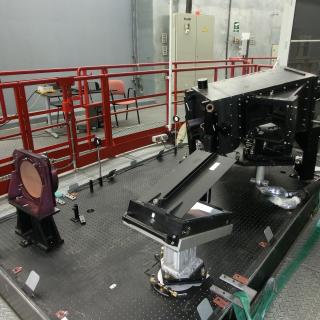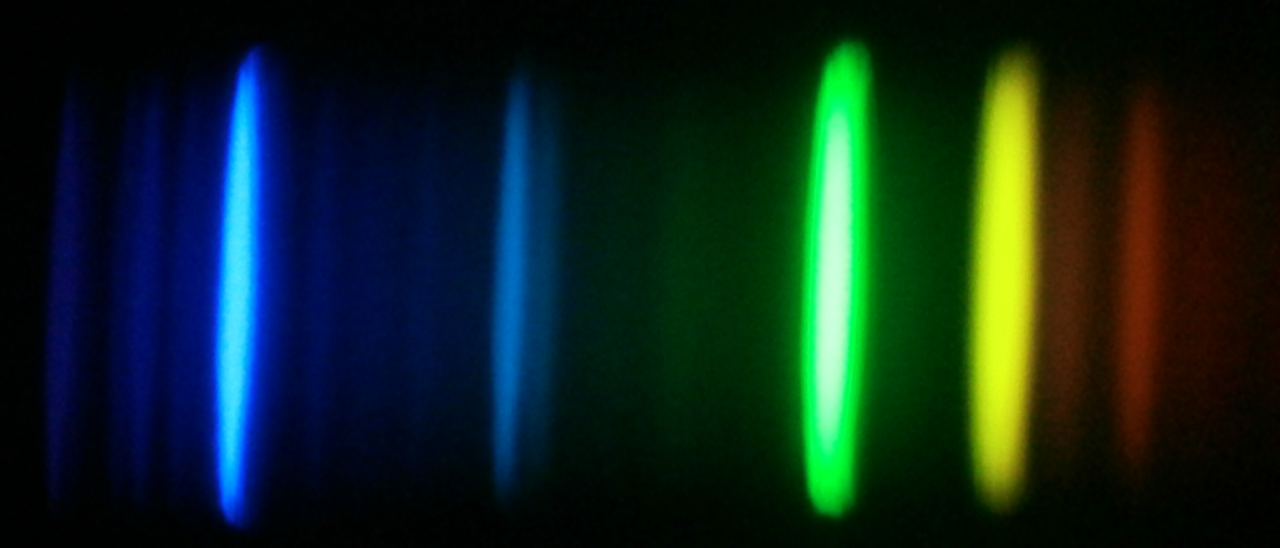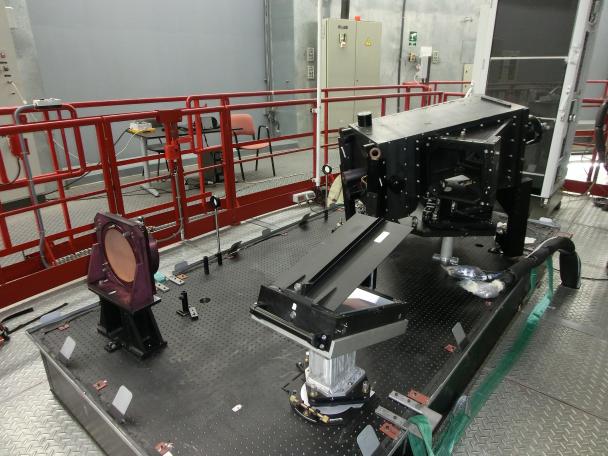Subvenciones relacionadas:
General
La espectroscopía de estrellas nos permite determinar las propiedades y composiciones químicas de las mismas. A partir de esta información para estrellas de diferente edad en la Vía Láctea es posible reconstruir la evolución química de la Galaxia, así como el origen de los elementos más pesados que el boro, forjados principalmente en los interiores estelares. También es posible estudiar la formación estelar, y la de la propia Galaxia, a través de la huella que deja el potencial Galáctico en las órbitas de las estrellas, y de las distribuciones de masa, edad y la abundancia de elementos pesados.
La obtención de espectros con alta resolución espectral, apropiados para estudios de la composición química, requiere instrumentación sofisticada y eficiente. Esto es especialmente cierto en investigaciones en las que se necesitan extensas muestras de estrellas, que exigen observar cientos, o incluso miles de fuentes de forma simultánea. El procesado y análisis de los datos debe ser automatizado para ser igualmente eficiente.
La interpretación de los espectros se basa en modelos físicos de las atmósferas de las estrellas, de donde se escapa la luz que observamos. Los ingredientes fundamentales para la construcción de estos modelos son la dinámica de fluidos, y las propiedades de los átomos, iones y moléculas, especialmente en lo que se refiere a sus interacciones con la radiación que proviene del interior estelar. Una vez que se tiene un modelo plausible, es posible calcular de forma detallada cómo se propaga la radiación a través de la atmósfera estelar, y el espectro emergente, para, de forma iterativa, compararlo con las observaciones y refinar el modelo.
Este Proyecto incluye tres diferentes frentes de investigación:
- La mejora de los modelos de atmósfera y las simulaciones de espectros estelares.
- El desarrollo de herramientas para la obtención, reducción y el análisis de observaciones espectroscópicas, y en particular para la determinación de abundancias químicas en estrellas.
- El diseño, preparación, y ejecución de estudios espectroscópicos de estrellas con el fin de entender a) los aspectos más relevantes de la física de las atmósferas estelares, b) la formación y evolución de las estrellas, c) el origen de los elementos químicos y d) la formación, estructura y evolución química de la Vía Láctea.
Miembros
Resultados
- Completar la instalación y pruebas de HORuS en GTC
- Descubrir dos nuevas estrellas con abundancias de hierro inferiores a 100.000 veces el valor solar
- Completar la clasificación de los espectros de APOGEE con K-means
- Publicar una colección completa de espectros modelo para estrellas O a M
- Identificar la huella de la difusión química en las atmósferas de estrellas del cúmulo M67
Actividad científica
Publicaciones relacionadas
-
The Gaia-ESO Survey: chemical signatures of rocky accretion in a young solar-type star
It is well known that newly formed planetary systems undergo processes of orbital reconfiguration and planetary migration. As a result, planets or protoplanetary objects may accrete onto the central star, being fused and mixed into its external layers. If the accreted mass is sufficiently high and the star has a sufficiently thin convective
Spina, L. et al.Fecha de publicación:
102015 -
Abundances, Stellar Parameters, and Spectra from the SDSS-III/APOGEE Survey
The SDSS-III/Apache Point Observatory Galactic Evolution Experiment (APOGEE) survey operated from 2011–2014 using the APOGEE spectrograph, which collects high-resolution (R ∼ 22,500), near-IR (1.51–1.70 μm) spectra with a multiplexing (300 fiber-fed objects) capability. We describe the survey data products that are publicly available, which include
Holtzman, J. A. et al.Fecha de publicación:
112015 -
The Eleventh and Twelfth Data Releases of the Sloan Digital Sky Survey: Final Data from SDSS-III
The third generation of the Sloan Digital Sky Survey (SDSS-III) took data from 2008 to 2014 using the original SDSS wide-field imager, the original and an upgraded multi-object fiber-fed optical spectrograph, a new near-infrared high-resolution spectrograph, and a novel optical interferometer. All of the data from SDSS-III are now made public. In
Alam, S. et al.Fecha de publicación:
72015 -
The Gaia-ESO Survey: Empirical determination of the precision of stellar radial velocities and projected rotation velocities
Context. The Gaia-ESO Survey (GES) is a large public spectroscopic survey at the European Southern Observatory Very Large Telescope. Aims: A key aim is to provide precise radial velocities (RVs) and projected equatorial velocities (vsini) for representative samples of Galactic stars, which will complement information obtained by the Gaia astrometry
Jackson, R. J. et al.Fecha de publicación:
82015 -
Chemical Cartography with APOGEE: Metallicity Distribution Functions and the Chemical Structure of the Milky Way Disk
Using a sample of 69,919 red giants from the SDSS-III/APOGEE Data Release 12, we measure the distribution of stars in the [α/Fe] versus [Fe/H] plane and the metallicity distribution functions (MDFs) across an unprecedented volume of the Milky Way disk, with radius 3 < R < 15 kpc and height | z| \lt 2 kpc. Stars in the inner disk (R < 5 kpc) lie
Hayden, M. R. et al.Fecha de publicación:
82015 -
A New sdO+dM Binary with Extreme Eclipses and Reflection Effect
We report the discovery of a new totally eclipsing binary (R.A. = {06}{{h}}{40}{{m}}{29}{{s}}11; decl. = +38°56‧52″2 J = 2000.0; Rmax = 17.2 mag) with an sdO primary and a strongly irradiated red dwarf companion. It has an orbital period of Porb = 0.187284394(11) day and an optical eclipse depth in excess of 5 mag. We obtained 2 low-resolution
Derekas, A. et al.Fecha de publicación:
82015 -
An equatorial ultra iron-poor star identified in BOSS
We report the discovery of SDSS J131326.89-001941.4, an ultra iron-poor red giant star ([Fe/H] ≃ -4.3) with a very high carbon abundance ([C/Fe] ≃ +2.5). This object is the fifth star in this rare class, and the combination of a fairly low effective temperature (Teff ≃ 5300 K), which enhances line absorption, with its brightness (g = 16.9), makes
Ge, J. et al.Fecha de publicación:
72015 -
Rapid Rotation of Low-mass Red Giants Using APOKASC: A Measure of Interaction Rates on the Post-main-sequence
We investigate the occurrence rate of rapidly rotating (v{sin}i >10 km s‑1), low-mass giant stars in the Apache Point Observatory Galaxy Evolution Experiment-Kepler (APOKASC) fields with asteroseismic mass and surface gravity measurements. Such stars are likely merger products and their frequency places interesting constraints on stellar population
Stello, D. et al.Fecha de publicación:
72015 -
Young α-enriched giant stars in the solar neighbourhood
We derive age constraints for 1639 red giants in the APOKASC sample for which seismic parameters from Kepler, as well as effective temperatures, metallicities and [α/Fe] values from APOGEE DR12 (Apache Point Observatory Galactic Evolution Experiment Data Release 12) are available. We investigate the relation between age and chemical abundances for
Martig, M. et al.Fecha de publicación:
82015 -
Deep SDSS optical spectroscopy of distant halo stars. II. Iron, calcium, and magnesium abundances
Aims: We analyze a sample of 3944 low-resolution (R ~ 2000) optical spectra from the Sloan Digital Sky Survey (SDSS), focusing on stars with effective temperatures 5800 ≤ Teff ≤ 6300 K, and distances from the Milky Way plane in excess of 5 kpc, and determine their abundances of Fe, Ca, and Mg. Methods: We followed the same methodology as in the
Fernández-Alvar, E. et al.Fecha de publicación:
52015 -
New H-band Stellar Spectral Libraries for the SDSS-III/APOGEE Survey
The Sloan Digital Sky Survey-III (SDSS-III) Apache Point Observatory Galactic Evolution Experiment (APOGEE) has obtained high-resolution (R ∼ 22,500), high signal-to-noise ratio (\gt 100) spectra in the H-band (∼1.5–1.7 μm) for about 146,000 stars in the Milky Way galaxy. We have computed spectral libraries with effective temperature ({{T}eff})
Zamora, O. et al.Fecha de publicación:
62015 -
Exploring Anticorrelations and Light Element Variations in Northern Globular Clusters Observed by the APOGEE Survey
We investigate the light-element behavior of red giant stars in northern globular clusters (GCs) observed by the SDSS-III Apache Point Observatory Galactic Evolution Experiment. We derive abundances of 9 elements (Fe, C, N, O, Mg, Al, Si, Ca, and Ti) for 428 red giant stars in 10 GCs. The intrinsic abundance range relative to measurement errors is
Mészáros, Sz. et al.Fecha de publicación:
52015 -
Young [α/Fe]-enhanced stars discovered by CoRoT and APOGEE: What is their origin?
We report the discovery of a group of apparently young CoRoT red-giant stars exhibiting enhanced [α/Fe] abundance ratios (as determined from APOGEE spectra) with respect to solar values. Their existence is not explained bystandard chemical evolution models of the Milky Way, and shows that the chemical-enrichment history of the Galactic disc is more
Chiappini, C. et al.Fecha de publicación:
42015 -
X-Ray Evidence for a Pole-dominated Corona on AB Dor
A fine analysis of spectral line widths and Doppler shifts employing Fourier transform and cross-correlation techniques has been applied to Chandra HETG spectra obtained in 1999 October of the rapidly rotating young star AB Doradus in order to investigate its coronal topology. The observation lasted 52.3 ks, covering 1.2 rotation periods. The X-ray
Drake, J. J. et al.Fecha de publicación:
32015 -
Gaia-ESO Survey: Analysis of pre-main sequence stellar spectra
Context. The Gaia-ESO Public Spectroscopic Survey is obtaining high-quality spectroscopy of some 100 000 Milky Way stars using the FLAMES spectrograph at the VLT, down to V = 19 mag, systematically covering all the main components of the Milky Way and providing the first homogeneous overview of the distributions of kinematics and chemical element
Lanzafame, A. C. et al.Fecha de publicación:
42015 -
The APOGEE Spectroscopic Survey of Kepler Planet Hosts: Feasibility, Efficiency, and First Results
The Kepler mission has yielded a large number of planet candidates from among the Kepler Objects of Interest (KOIs), but spectroscopic follow-up of these relatively faint stars is a serious bottleneck in confirming and characterizing these systems. We present motivation and survey design for an ongoing project with the Sloan Digital Sky Survey III
Fleming, S. W. et al.Fecha de publicación:
42015 -
The Puzzling Li-Rich Red Giant Associated With Ngc 6819
A Li-rich red giant (RG) star (2M19411367+4003382) recently discovered in the direction of NGC 6819 belongs to the rare subset of Li-rich stars that have not yet evolved to the luminosity bump, an evolutionary stage where models predict Li can be replenished. The currently favored model to explain Li enhancement in first-ascent RGs like 2M19411367
Carlberg, J. K. et al.Fecha de publicación:
32015 -
The Gaia-ESO Survey: A globular cluster escapee in the Galactic halo
A small fraction of the halo field is made up of stars that share the light element (Z ≤ 13) anomalies characteristic of second generation globular cluster (GC) stars. The ejected stars shed light on the formation of the Galactic halo by tracing the dynamical history of the clusters, which are believed to have once been more massive. Some of these
Lind, K. et al.Fecha de publicación:
32015 -
The Gaia-ESO survey: Discovery of a spatially extended low-mass population in the Vela OB2 association
The nearby (distance ~ 350-400 pc), rich Vela OB2 association, includes γ2 Velorum, one of the most massive binaries in the solar neighbourhood and an excellent laboratory for investigating the formation and early evolution of young clusters. Recent Gaia-ESO survey observations have led to the discovery of two kinematically distinct populations in
Sacco, G. G. et al.Fecha de publicación:
22015 -
The Gaia-ESO Survey: Kinematics of seven Galactic globular clusters
The Gaia-ESO survey is a large public spectroscopic survey aimed at investigating the origin and formation history of our Galaxy by collecting spectroscopy of representative samples (about 105 Milky Way stars) of all Galactic stellar populations, in the field and in clusters. The survey uses globular clusters as intra- and inter-survey calibrators
Lardo, C. et al.Fecha de publicación:
12015
Charlas relacionadas
No se han encontrado charlas relacionadas.Congresos relacionados
No se han encontrado congresos relacionados.Noticias

Espectrógrafo de alta resolución en operación en el Gran Telescopio Canarias (GTC) de 10m. usando componentes del espectrógrafo UES, utilizado en el Telescopio William Herschel (WHT) de 4.2 m. entre los años 1992 y 2001.

El Gobierno español concede la Acreditación como Centro de Excelencia Severo Ochoa con el fin de reconocer, premiar y promover la investigación científica de alto nivel en los centros y unidades españoles que tengan un alto nivel de excelencia en el ámbito internacional. Los objetivos específicos del Programa Severo Ochoa son: - Mejorar la






